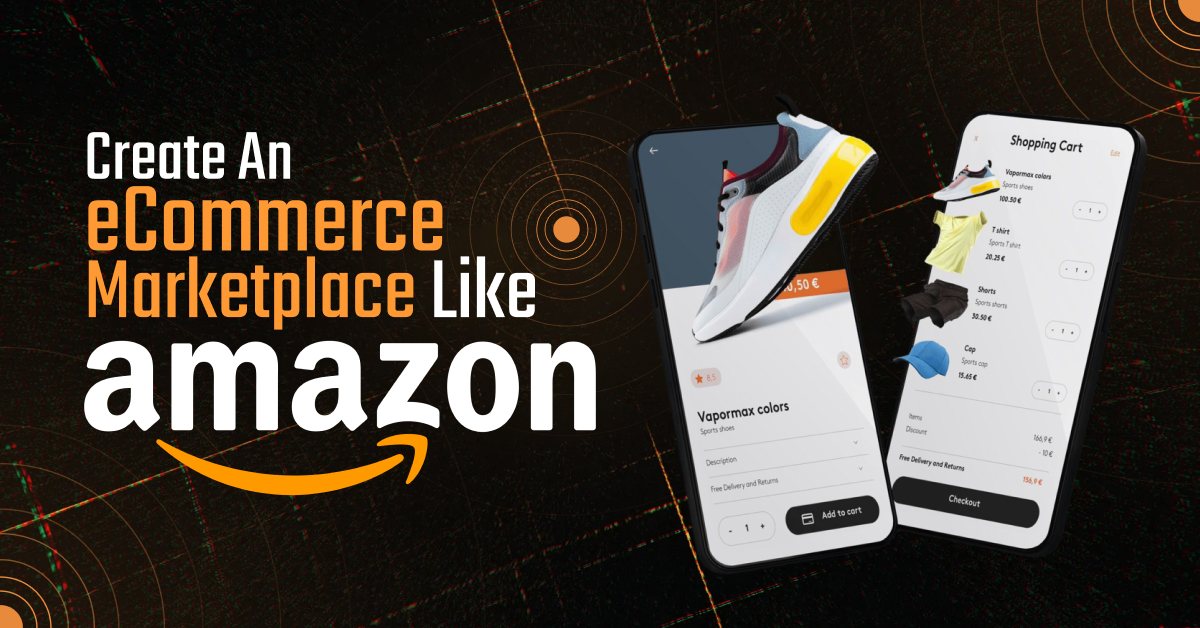In the modern era, the demand for web portals is increasing year on year. A lot of web portals are available in the markets. These are government portals, vendor portals, e-commerce web applications, CMS web applications, student web portals, corporate portals, and many others.
These web portals attract users by offering different services. These web portals are developed at a budget-friendly cost. On the business side, making your web portal and offering services to people is the best way to generate revenue.
Through this blog, we will examine the web portal development cost in all regions and also cover cost-reducing terms. Let’s go deep into the blog and build your ideal projects.
What Is The Web Portal?
The web portal is an online platform that allows users to access the different services related to their work. It provides centralized access to the customer that helps increase the customers’ reach on the services. Additionally, the web portal brings information from diverse sources and provides users with easy ways. These resources are search engines, email, internet, and other platforms.
How Much Cost To Build A Web Portal In All Regions?
Cost is the primary point during create a web portal. For most business people, the first question is about the cost of making a web portal. Developing a web portal depends on different factors, such as project location, complexity, and the provision of services to the public, among many others.

1. Web Portal Development Cost in USA
In the USA, web portal development costing depend on different factors. Choosing the advanced tech stack like AI-powered features, advanced API integration, large database, backend like angularJS development and others. However, location is another important concern. Developing the project in a prime location compared to a small town is costly. Here is some cost estimation mentioned below for web development in the USA.
| Web Application Complexity | Estimate Cost |
| Simple Web Portal Application | $10000 To $ 14000 |
| Medium Web Portal Application | $15000 To $ 18000 |
| Complex Web Portal Application | $20000 To $ 23000 |
2. Web Portal Development Cost in Germany
The cost to make a web portal in Germany depends on different terms. It offers services to the public, advanced technology stacks, API integration, and others. Apart from this, location is another cost-effective term. Choosing a prime location in Germany to develop a web application has become more costly than in the local town. Here are some cost estimations for developing a web portal in Germany.
| Web Application Complexity | Estimate Cost |
| Simple Web Portal Application | EUR 9,586 To EUR 13,420 |
| Medium Web Portal Application | EUR 14,379 To EUR 17,236 |
| Complex Web Portal Application | EUR19,172 To EUR 22,011 |
3. Web Portal Development Cost in India
In India, you can develop web portal applications on an affordable budget. Most business people build their projects in India. In this region, labor costs are low compared to other regions. However, developing the project in a prime location in India slightly increases the project cost compared to a local town. You can consult with a golang development company to develop your project at an affordable cost in India.
| Web Application Complexity | Estimate Cost |
| Simple Web Portal Application | INR 867,188 – INR 1,214,063 |
| Medium Web Portal Application | INR 1,300,781 – INR 1,561,875 |
| Complex Web Portal Application | INR 1,733,750 – INR 1,993,563 |
4. Web Portal Development Cost in New Zealand
In New Zealand, the cost of making a web portal depends on different terms. These factors include an advanced tech stack, API integration, AI-powered features, and development stacks like Django development for web portal flexibility. Additionally, developing the project in a prime location is more costly than developing it in a small town. Living, traveling, and other expenses impact the overall development cost. Here are an cost estimation to develop the web portal in New Zealand.
| Web Application Complexity | Estimate Cost |
| Simple Web Portal Application | NZ$15,746 – NZ$22,044 |
| Medium Web Portal Application | NZ$23,619 – NZ$28,294 |
| Complex Web Portal Application | NZ$31,492 – NZ$36,741 |
5. Web Portal Development Cost in UK
In the UK, the development cost of a web portal depends on different terms. The project complexity, location, advanced tech stack, and many others affect the overall development cost. However, choosing the prime location to develop the project becomes sightly costly compared to local towns. On this condition, many web design company in the UK offer budget-friendly development services; you can consult with them. Here are some costs estimated for create the web portal.
| Web Application Complexity | Estimate Cost |
| Simple Web Portal Application | £7,940 – £11,116 |
| Medium Web Portal Application | £11,910 – £14,292 |
| Complex Web Portal Application | £15,880 – £18,266 |
6. Web Portal Development Cost in Australia
In the Australian region, the cost of developing a web portal is a challenging task. Choosing advanced tech, AI power tools, front-end and back-end technology are other cost-effective terms. However, developing the project in a modern location in Australia sightly increases the cost compared to a small town. To make your own web portal at an affordable cost, consult with a full stack development company. Here are some cost estimations for developing the web portal in Australia.
| Web Application Complexity | Estimate Cost |
| Simple Web Portal Application | A$15,746 – A$22,044 |
| Medium Web Portal Application | A$23,619 – A$28,294 |
| Complex Web Portal Application | A$31,492 – A$36,741 |
7. Web Portal Development Cost in France
In France, the cost to develop a web portal is a challenging terms. Choosing the advanced tech stack, development stacks like NodeJS development for the web performance, customized UI/UX, and other features. These are cost-effective terms for developing the web portal. Additionally, choosing the prime location in France to develop the web portal is a sightly increase the cost compared to a small town. Here are an some cost estimation to develop the web portal in France.
| Web Application Complexity | Estimate Cost |
| Simple Web Portal Application | CHF9,019 – CHF12,626 |
| Medium Web Portal Application | CHF13,528 – CHF16,234 |
| Complex Web Portal Application | CHF18,038 – CHF20,840 |
8. Web Portal Development Cost in Sweden
In Sweden, the cost to develop a web portal varies on different factors. Choosing advanced tech like backend development, DevOps & CI/CD tools, AI-powered tools, security, and other features. However, building a web portal in a prime location is more cost-effective than in a local town. Here are some cost estimations to develop a web portal application in Sweden.
| Web Application Complexity | Estimate Cost |
| Simple Web Portal Application | kr95,829 – kr134,161 |
| Medium Web Portal Application | kr143,744 – kr172,492 |
| Complex Web Portal Application | kr191,659 – kr220,407 |
9. Web Portal Development Cost in UAE
In UAE, the cost of developing web portal varies on the project’s difficulty. Adding advanced features, development stacks like Vuejs development for high performance, AI-powered features, and many others. However, increasing the complexity of the project affects the cost. Choosing the prime location for developing the project affects the overall cost compared to a small town. Here are some cost estimations to develop the web portal in UAE.
| Web Application Complexity | Estimate Cost |
| Simple Web Portal Application | AED 51422 – AED 51,422 |
| Medium Web Portal Application | AED 66114- AED55095 |
| Complex Web Portal Application | AED84153 – AED73460 |
10. Web Portal Development Cost in Saudi Arabia
In Saudi Arabia, web portal development cost is a challenging term. Features such as cloud platform, security, AI-powered, customized UI/UX, and others impact the overall project cost. To integrate web portal features at an affordable cost, choose a web portal development company in Saudi Arabia. Here are some cost estimations for developing a web portal application in Saudi Arabia.
| Web Application Complexity | Estimate Cost |
| Simple Web Portal Application | SAR 52822 – SAR 37730 |
| Medium Web Portal Application | SAR 67914 – SAR 56595 |
| Complex Web Portal Application | SAR 86779 – SAR 75460 |
11. Web Portal Development Cost in Qatar
In Qatar, the cost of making a web portal depends on the project’s type and difficulty. Choosing the advanced tech stack, frontend technology, codeigniter development for the web flexibility and others. All these terms impact the overall project cost. Additionally, the development location is also another essential factor. Developing the project in the prime location of Qatar increase the cost of the web portal. Here is some cost estimation for building the web portal in Qatar.
| Web Application Complexity | Estimate Cost |
| Simple Web Portal Application | QAR 51422- QAR36730 |
| Medium Web Portal Application | QAR66114 – QAR55095 |
| Complex Web Portal Application | QAR86153 – QAR73460 |
12. Web Portal Development Cost in Brazil
In Brazil, the development cost of a web portal depends on the project’s type and difficulty. The use of advanced technology, like AI-powered features, DevOps & CI/CD Tools, and advanced security, impacts the overall development cost. However, developing the project in prime locations has an impact on project cost than developing it in a small town. Some cost estimations for developing a web portal in Brazil are mentioned below.
| Web Application Complexity | Estimate Cost |
| Simple Web Portal Application | R$50,000 – R$70,000 |
| Medium Web Portal Application | R$75,000 – R$90,000 |
| Complex Web Portal Application | R$100,000 – R$115,000 |
13. Web Portal Development Cost in Japan
In Japan, the cost of developing a web portal depends on the project’s difficulty. Choosing an advanced tech stack, such as AI-powered features, database, and Laravel development, for the application’s smoothness impacts the overall development cost. Additionally, developing the project in a prime location is also cost-effective terms. Take a consultant with a software development company to build your project at in affordable cost. Here are some cost estimations for developing the web portal application outlined below.
| Web Application Complexity | Estimate Cost |
| Simple Web Portal Application | JP¥1,516,240 – JP¥2,122,736 |
| Medium Web Portal Application | JP¥2,274,360 – JP¥2,729,232 |
| Complex Web Portal Application | JP¥3,032,480 – JP¥3,487,352 |
14. Web Portal Development Cost in China
The cost to build a web portal in China depends on the different terms. The project complexity includes tech stack, advanced backend, frontend technology, and many others. These factors impact the project cost. On the other side, choosing a prime location in China for the project increases the cost compared to a small town. You can consult with CMS development company to make the web portal at in affordable cost. Here are some cost estimations for developing a web portal in China.
| Web Application Complexity | Estimate Cost |
| Simple Web Portal Application | ¥72,572 – ¥101,600 |
| Medium Web Portal Application | ¥108,858 – ¥130,320 |
| Complex Web Portal Application | ¥145,144 – ¥166,040 |
15. Web Portal Development Cost in Canada
The cost to create a web portal application in Canada depends on various factors. Development location, project complexity, choosing an advanced tech stack, and other factors impact the overall cost of the project. Apart from this, choosing a modern location in Canada increases the development cost compared to a small town. Here are some cost estimations for developing a web portal application in Canada.
| Web Application Complexity | Estimate Cost |
| Simple Web Portal Application | C$14,200 – C$19,880 |
| Medium Web Portal Application | C$21,300 – C$25,560 |
| Complex Web Portal Application | C$28,400 – C$32,660 |
16. Web Portal Development Cost in Singapore
Making a web portal application in the Singapore region is a challenging task. Advanced features, such as advanced backend technology like PHP Development for flexibility, advanced database, and features. These are affect the development cost.
However, choosing advanced technologies in development increases the demand for experienced developers. The prime location for developing the project is also cost-effective term. Here is some cost estimation for the web portal application development in Singapore.
| Web Application Complexity | Estimate Cost |
| Simple Web Portal Application | S$13,433 – S$18,806 |
| Medium Web Portal Application | S$20,149 – S$24,178 |
| Complex Web Portal Application | S$26,866 – S$30,839 |
17. Web Portal Development Cost in Israel
The cost of developing a web portal application in Israel depends on the demand for project services. Developing a different web portal, such as a government portal, private portal, student portal, and others, has different costs. Choosing the prime location in Israel to develop a web portal slightly increases the overall cost compared to a small town. Here is some cost estimation for creating a web portal in Israel, as outlined below.
| Web Application Complexity | Estimate Cost |
| Simple Web Portal Application | ILS 35,474 – ILS 49,664 |
| Medium Web Portal Application | ILS 53,211 – ILS 63,854 |
| Complex Web Portal Application | ILS 70,948 – ILS 81,497 |
18. Web Portal Development Cost in Switzerland
In Switzerland, cost to build a web portal application is a challenging task. However, project difficulties such as using advanced features, customized UI/UX, and others are also cost-effective factors. Choosing Python development for flexible coding helps the developer, but it impacts the overall development cost. Here are some cost estimations for the development of the web portal application.
| Web Application Complexity | Estimate Cost |
| Simple Web Portal Application | CHF9,019 – CHF12,626 |
| Medium Web Portal Application | CHF13,528 – CHF16,234 |
| Complex Web Portal Application | CHF18,038 – CHF20,840 |
How To Reduce Cost to Develop a Web Portal?
Development companies are targeted to develop web portals on a lower budget. This is beneficial for both customer and the development company. In this case, hire an experienced developer who is capable of reducing the overall project cost by applying the new techniques. Some cost-reduction techniques are outlined below.
- Define Clear Requirements
- Choose the right development approach
- Choose Outsource development
- Minimize Design Complexity
- Leverage Pre-Built Solutions

1. Define Clear Requirements
Establishing clear requirements is important for cost efficiency. Detailed project documentation, including features, design expectations, and functionality, minimizes misunderstandings and changes during development. Conduct stakeholder meetings to align goals, create wireframes or prototypes, and prioritize must-have features. This approach reduces scope creep, prevents budget overruns, and ensures that the development team focuses on delivering exactly what the business needs.
2. Choose the Right Development Approach
Selecting the appropriate development methods can significantly impact costs. The development allows iterative progress, helping teams focus on priority features and make adjustments without extensive work. The choice depends on the project demand, difficulty, and flexibility needed. A tailored approach helps optimize resource use, manage timelines effectively, and reduce the risk of costly delays or unnecessary development.
3. Choose Outsource Development
Outsourcing web portal development to experienced external teams can reduce costs, especially when choosing developers from different regions with lower labor costs. It offers access to specialization without the in-house hiring of full-time staff. Outsourcing also provides flexibility to scale resources as needed. It ensure that you only pay for the expertise required for project. This leads to overall cost efficiency while maintaining quality standards.
4. Minimize Design Complexity
A simple, user-friendly design can significantly cut costs. Complex and custom UI/UX designs require more development time and testing. It increases overall project expenses. Instead, opt for minimalist designs using standard components and design libraries. Focus on usability and essential features, avoiding unnecessary animations or advanced graphics. This approach ensures a professional and functional design while controlling the budget.
5. Leverage Pre-Built Solutions
Utilizing pre-built components, templates, and third-party integrations can save both time and money. Many platforms offer ready-made modules for authentication, e-commerce, content management, and more. Instead of developing features from scratch, integrating these tools accelerates development while reducing coding and testing efforts. Pre-built solutions also offer tested reliability, lowering the risk of bugs and issues, which reduces the cost of developing web portals.
Final Thought!
Building a web portal and offering services for customers is not only about earning revenue. It is a challenging task to be competitive for those who are given their web portal services in the market. Offering new advanced technology and other solutions for an organization can be defeatable for other competitors.
You can consult with a web design company to make your web portal application at a budget-friendly cost.
Frequently Asked Question
1. What Is The Web Portal Application Development Cost?
The web portal application development cost ranges between $8000 to $25000. Generally, the project cost depends on the project’s complexity, location, and many others. As per complexity, the project cost is mentioned below:
- Normal Web Portal Application: $10000 To $ 14000
- Moderate Web Portal Application: $15000 To $18000
- Complex Web Portal Application: $20000 To $ 25000
2. How to Create a Web Portal Application?
Follow the below process to makes a Web Portal Application.
- Define Objectives and Requirements
- Choose the Right Technology Stack
- Testing and Quality Assurance
- Deployment on the server
- Maintenance and Updates
3. How Long Does It Take To Develop Web Portal Application
The web portal development time depends on the project’s difficulty and team size. Here are some estimated development times for the project.
- Normal Web Portal Application : 3 to 5 month
- Moderate Web Portal Application: 6 to 9 month
- Complex Web Portal Application: 10 to 12+ month
4. How To Reduce The Web Portal Application Development Cost?
Follow the outlined process to reduce the web portal application development cost.
- Define Clear Requirements
- Choose the right development approach
- Choose Outsource development
- Minimize Design Complexity
- Leverage Pre-Built Solutions
5. How Much Does It Cost To Hire a Developer for a Web Portal Application Development?
The cost to hire a developer depends on the project requirements and difficulty. Here are some developer costs mentioned below:
- Fresh web portal developer: $10 to $14 per hour
- Less experienced web portal developer: $16 to $23 per hour
- Highly experienced web portal developer: $25+ per hour






























